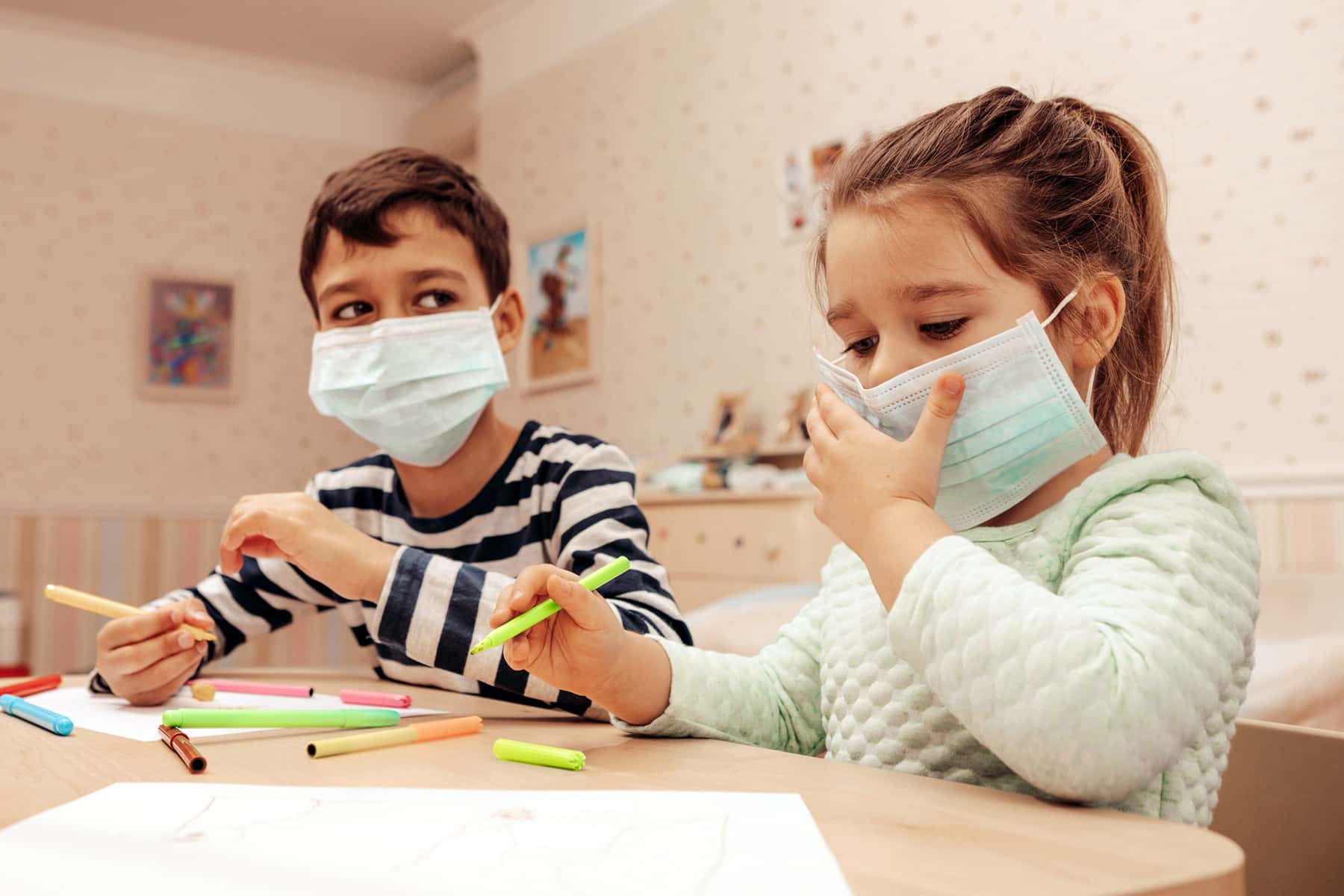
Childcare has become central to United States economic recovery, but daycares are struggling to safely reopen during a pandemic and recession.
Years ago, when our three children were small, my husband and I were caught in a catch-22 familiar to many working-class families. Our kids had serious medical issues, but we couldn’t afford the treatment they needed; my husband’s employer only provided insurance for the employee, not their family. I found a job that provided minimal health insurance, but the cost of daycare for three kids was way more than the job paid.
The sky-high daycare bill meant I would actually lose money by going to work. I took the job anyway, because we desperately needed the insurance.
Twenty years later, in the middle of a pandemic, things have only gotten worse for working parents, as the cost of childcare has soared. Childcare has become increasingly unaffordable for parents who work minimum-wage jobs, or have to care for several kids. Kristina Molina, a mother of four living in Oakland, California, said arranging childcare sometimes costs more than she earns in a month at her county administrative job.
“There have been times when 100% of my income is going to childcare,” Molina said. “For parents raising the next generation, it’s a huge financial burden. We can never save for a rainy day.”
Over the years, the cost of childcare in the US has skyrocketed to a point that it often has become a top household expense; in at least 30 states, the annual cost of childcare for an infant is more than in-state tuition at a public university and exceeds the average mortgage.
Working-class parents – today we might call them essential workers – have long known that securing childcare is a delicate and sometimes painful negotiation. But the pandemic has exacerbated the issue. After nearly five months, Covid-19 has made it impossible to ignore the plight of working-class families, and underlined just how vital childcare workers are.
Despite how prevalent this issue is, the childcare dilemma is often rendered invisible because it happens in the home. But these days, everything happens in the home. Childcare has become central to US economic recovery – but daycares and other providers are struggling to safely reopen during a pandemic and the worst recession in decades. What will happen if they can’t make it?
To reopen or not to reopen?
The nature of childcare is such that providers must often balance the needs of their own families with those of the families who depend on them. Covid-19 has thrown in the additional challenge of not getting everyone sick.
When the pandemic started spreading along the east coast this spring, Angelique Marshall was worried about the health risks to herself, her adult daughter with disabilities and her elderly mother. But as a home-based childcare provider in Washington DC, she knew her clients had no other options for childcare.
To stay in business, Marshall read up on the necessary safety measures, and tracked mandates and advisories from state agencies and the Centers for Disease Control and Prevention. She then approached the parents she works for, ensuring they knew about their responsibilities with regards to following required health guidelines and what they needed to do if their child showed any symptoms.
It took considerable extra time and effort, but Marshall said she liked doing her part to help her community; by doing her job, Marshall said, she was able to help them do theirs, and in turn, support their own families. “Childcare pushes the economy,” she said. “If a parent has childcare, a parent can go to work.”
CentroNía, which provides early childhood education and other family support services in Washington DC and Maryland, recently resumed operations after being closed for nearly three months.
While the facilities were closed, the staff knew the families they serve would be forced to scramble to make other arrangements, Myrna Peralta, the head of CentroNía, said. Of the more than 400 families they serve, about 85% are low-income – which the center defines as earning 250% of federal poverty level for new applicants and up to 300% for contract renewals. Peralta said most of their parents, the ones that hadn’t lost their jobs, were either missing work or were working remotely. “Most parents’ options for childcare were limited: immediate adult family members, neighbors and trusted friends,” she said. “Unfortunately, older siblings were too often depended on to babysit.”
During the time they were shut down, Peralta said they were hearing from families on a daily basis who needed help – including existing clients and other parents scrambling to find childcare. “Our singular concern was, ‘Is there anything else we can or should be doing?’ As the area’s Covid numbers seem to be stabilizing, the time seemed right to reopen.”
The need for public assistance
Even during normal, non-pandemic times, access to childcare is a precious commodity for middle-class and working-class families. Local, state and federal programs can help some eligible families with the cost of childcare – but as with any such programs, there is often considerable red tape involved, and navigating these services can be a daunting process.
Peralta said the real problem, though, is not enough supply to meet the demand for childcare, which was true even before the pandemic. There aren’t nearly enough available slots in the area to meet the demand and some of the slots that are available don’t necessarily meet all the criteria of affordable, safe and high-quality.
Unfortunately, parents may see their options get even more limited. The National Association for the Education of Young Children released findings from a new survey this week that showed most childcare providers felt the industry will see widespread, permanent closures without significant federal funding to help providers recover. Shockingly, just 18% of the childcare programs surveyed were confident they will be able to survive a year without public assistance.
There are efforts to change things. Molina, the mother of four living in Oakland, is one of many local parents and childcare providers involved with Parent Voices Oakland; last year, the group campaigned in support of Measure C in Alameda county, which would use a small sales tax to help subsidize childcare programs for low-income children and pay childcare workers. The initiative passed with a majority vote in March – but opponents have said they will take legal action to block it, claiming it got just under the two-thirds vote required by law.
“Children who have high-quality childcare have a big advantage when they start school,” said Molina. “This creates a big disparity between kids based on income. That’s why I advocated so hard for that measure to get passed.”
Similar initiatives have been gaining steam across the US in recent years. Advocates hope one silver lining of the pandemic is that the surge of telecommuting and companies forced to embrace flexible work arrangements will inevitably shine a light on the need for greater childcare resources, which in turn may build momentum to develop a stronger safety net to provide access to quality childcare for all working families.
Bоbbі Dеmpsеy
Portions originally published on The Guardian as Covid-19 proves childcare in the US is broken – can it be fixed?
Help deliver the independent journalism that the world needs, make a contribution of support to The Guardian.














